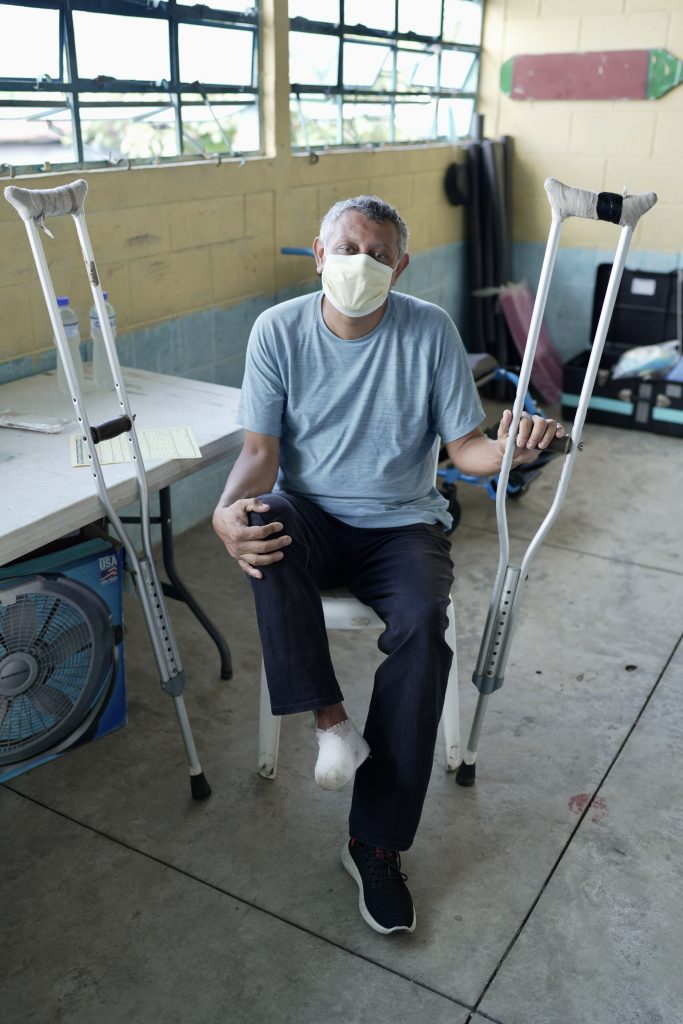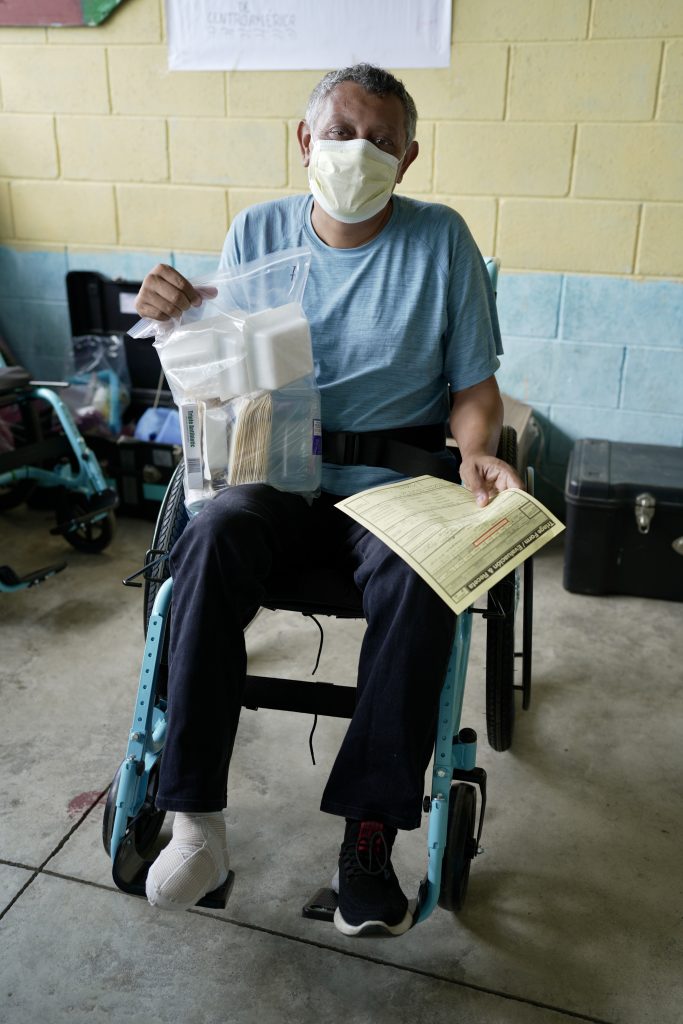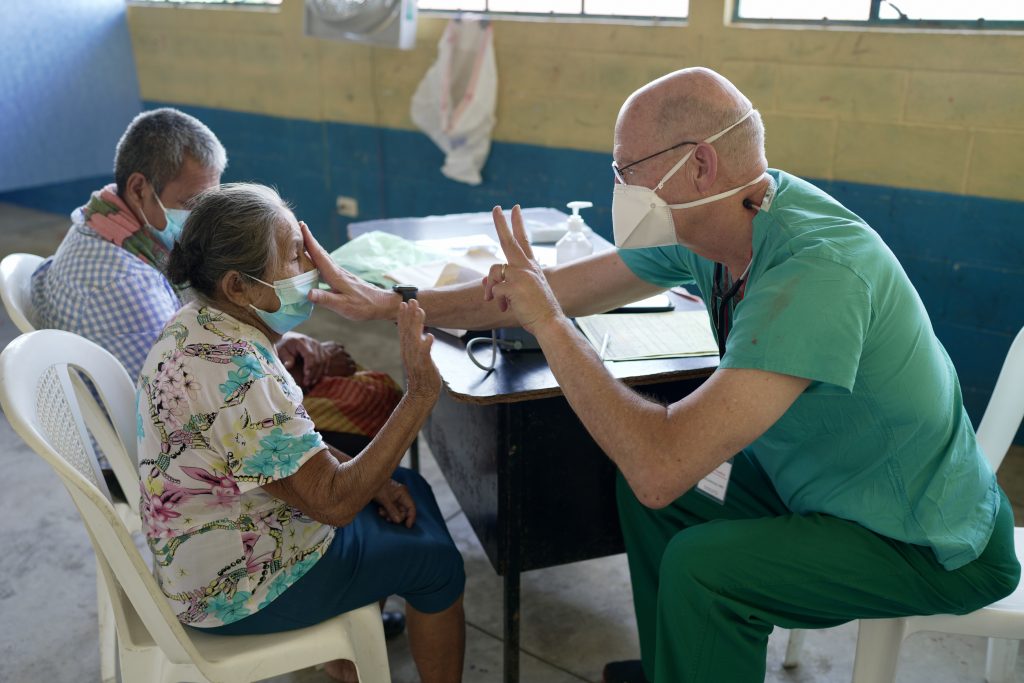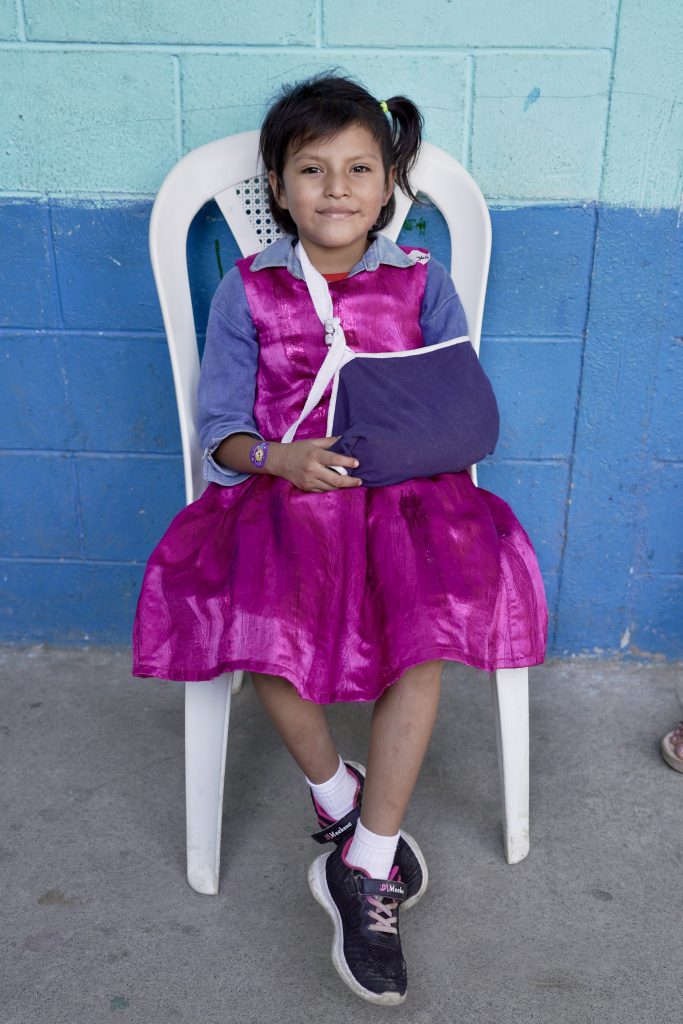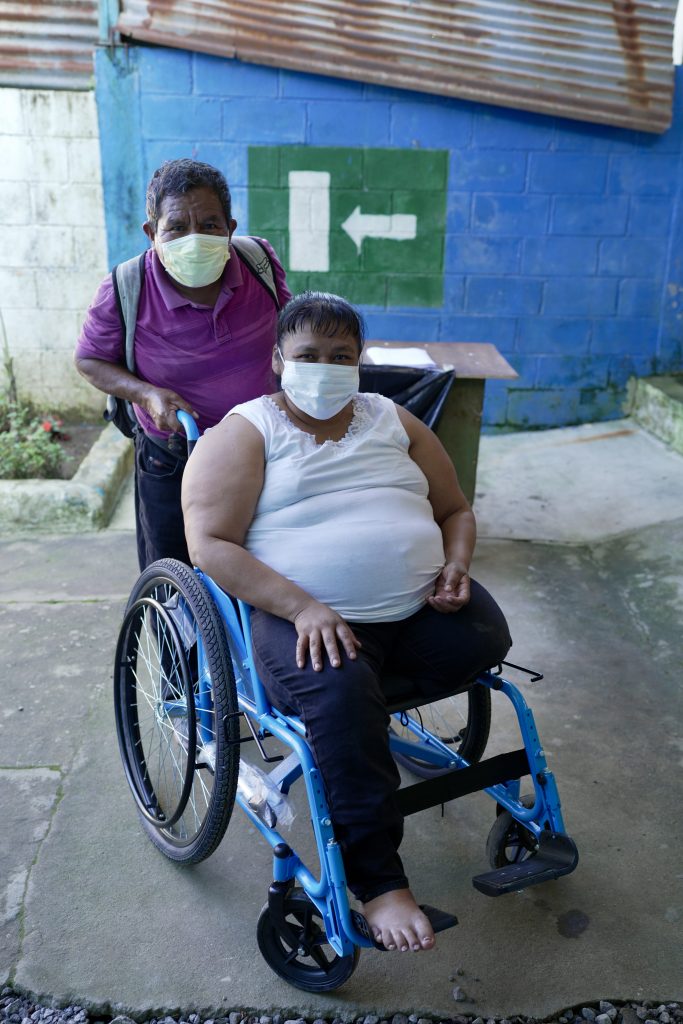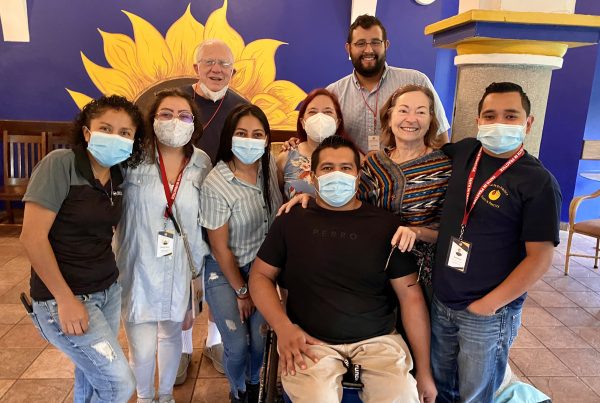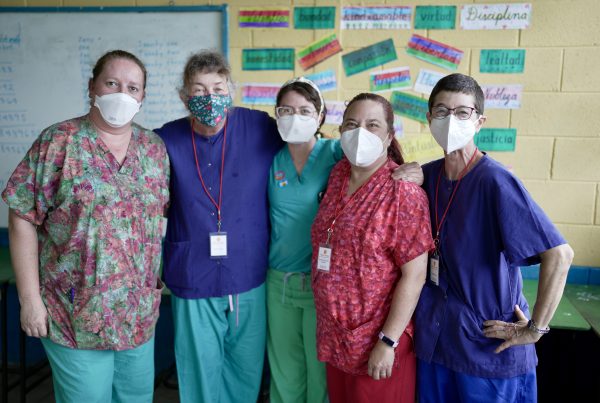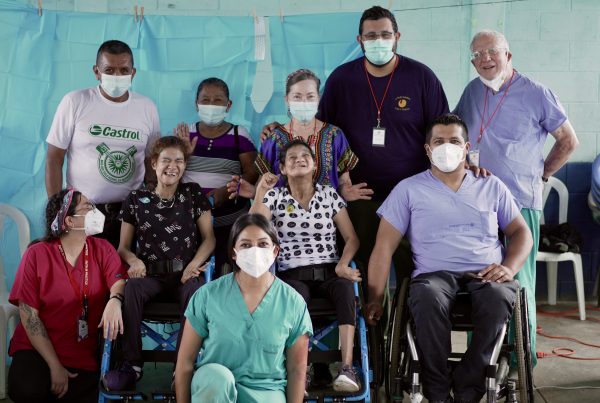Hola todos,
Today we arrived at our new clinic site in San Marcos Palajunoc. I didn’t realize it at first, but I had seen this school before, on what was likely my first FIP trip with Team Johnson in 2014. Back then, we had a dental clinic, which is now suspended due to the pandemic, but we had no mobility clinic. We also had a larger team seeing larger numbers of patients, but again because of the pandemic, the size of the operation has been scaled down. It is unfortunate that we cannot accommodate a larger number of patients on this visit, yet I can appreciate how much smoother the clinics run this way and that the quality of care for patients remains high. It’s easier to find whomever or whatever one needs, and the patients have more room to move about, which of course helps diminish the spread of COVID but also offers a calmer atmosphere for them to navigate the clinics.
After arriving early in the morning around 8am, we once again set up the clinics and dove right into work. We had a major boost in getting there: the trunks had all been delivered to the new school site before our arrival, and the wheelchairs (the heaviest items to move) were all stacked in a room adjacent to what would become the mobility clinic. Thanks to the local FIP staff and volunteers, all we had to do was put the rest of the trunks in their proper place, and make a few other minor adjustments, like placing a set of cinderblocks beneath the central table in the pharmacy so that the volunteers in that room do not have to bend over the entire day.
Fortunately, the sky was somewhat clear when we arrived, so we were treated to an incredible view of a volcano rising just behind the school. This was the main sight that triggered my memories of this school from several years back; Guatemala is full of dramatic landscapes and lush scenery, but the volcano behind the school really is spectacular. The school is also decorated with a quetzal sculpture hanging from the rafters and the bottoms of plastic water bottles adorn the concrete flowerbeds, appearing like flowers themselves.
We had little time to enjoy the scenery, however, as patients had already arrived and awaited care. Typically, the local volunteers begin organizing the patients well before our arrival, and the most elderly and frail, or those with mobility issues, are shepherded to the front of the line, where they can receive assistance with triage and head straight to the proper clinic. We usually see several patients that are carried in, but one stood out to me today: an elderly woman lying in a lounge chair. It was quite a clash to see this piece of furniture associated with poolside relaxation used as a means of conveyance for a sick patient. Eventually, she made her way to the mobility clinic, where Dr. Debra Caspers discovered that this patient had recently broken her hip. When her family brought her to the hospital, they were turned away, because the only patients allowed to enter currently are COVID patients or those with life-and-death emergencies. So this woman had been suffering for weeks with no medical care. Fortunately, we will be able to help her with a referral for surgery on an upcoming FIP trip.
Another man came into the mobility clinic on a pair of crutches. Severe issues with diabetes had led to amputations of some toes and portions of his feet. Fortunately, he left our clinic in a wheelchair and carrying an armful of medications and medical supplies. His spirits remained high despite his significant difficulties. Another man had his leg amputated above the knee; after receiving a new wheelchair, he visited the dermatology clinic to help with part of his amputation incision. After Dr. Jamael Thomas cleaned an infected section, Dr. Phil Johnson performed an ultrasound with a portable machine that connects to a smartphone. Fortunately, he was able to confirm that there were no further problems inside the patient’s leg. One last pair of patients stood out in the mobility clinic, though I first met them in gynecology. The mother turned out to be pregnant and had an ultrasound that bought joy to everyone in the room. Later on, her daughter received a special chair made for children, and soon after adjusting to the new straps and seat cushion, she was busily coloring a picture with crayons. We were especially glad to send them home with this wheelchair because the mother typically carried her growing daughter everywhere, which would be exceedingly difficult during the late stages of pregnancy.
Meanwhile, the pharmacy team was hard at work. As pharmacy supplies continue to dwindle, keeping up with the doctor’s prescriptions becomes a complicated task, because substitutions must be made, which can cause changes in the reactions between drugs, or the side effects, or the dosages. So the pharmacy team has to cut pills or create suspensions with increasing frequency, while communicating with the doctors sending the prescriptions. Cynthia Pekow, on her 17th village trip with FIP, says this is the most organized the pharmacy has ever been, partially because FIP has sent one staff member and one staff volunteer to assist with handing out the medications and to keep close track of which medications run out the fastest. It is never possible to fully predict what will be needed in any given village, but a bit of fine-tuning each year is immensely helpful.
Neither can we predict who might show up at the clinic in terms of the location of their home or the types of work they do. I know that many team members enjoy getting to know their patients as much as they can within a busy clinic day. Even the team members with limited Spanish skills can form new friendships. Through these interactions we learned that most of the patients came from nearby, as San Marcos Palajunoc is a fairly large village, but some came from locations several hours away. We also learned that the patients have a wide variety of jobs compared to the previous village clinics where the majority of adult men worked at banana plantations. Here, I met a laundry worker, a truck driver, and a teacher. We also saw a group of five policemen arrive together, each with different ailments.
Of course, as the team photographer and blogger, I am fortunate to get to meet many of the patients and have longer conversations with those that would like to chat. I talked the most today with a ten-year-old girl named Anyely. She is the eldest of five children and lives nearby the clinic site. She made a major impression on me by demonstrating her knowledge of English words, including numbers, colors, and phrases, then by reciting numbers up to twenty in the Mayan dialect of Quiche. Anyely also said that her dream is to come to the United States to be a lawyer. She told me all of this while holding her baby sister as their mother visited another clinic. I certainly couldn’t do all that when I was ten years old! Later on in the day, after Pastor Andy had set up a coloring station to the delight of many restless children, Anyely brought me two drawings of rainbows and apple trees. I will cherish these keepsakes and definitely think of her in years to come.
Tomorrow is our last day of clinic work. Many of us are certainly tiring physically, but we are excited to put everything we have left into our final day. Tune back in tomorrow to hear how it goes.
Thanks for reading,
Josie
To support this team and their commitment to our patients visit https://donate.faithinpractice.org/team/373443


